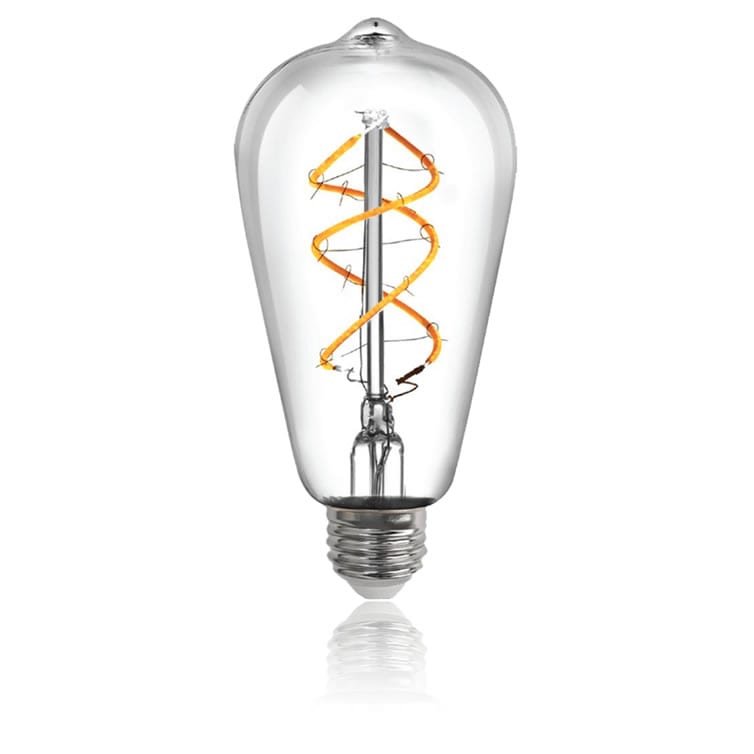From Edison to Commercial LEDs
Simply put, the advent of the incandescent bulb in the late eighteen-hundreds revolutionized the way we go about our daily lives. From home illumination to laying the foundation for a manufacturing revolution electricity and the incandescent bulb have proven to be a founding pillar of massive economic expansion the world over.
Yes, it’s true that pretty much everyone knows of the importance electric lighting has played in shaping our world and providing the means to spur the industrial revolution. What you may not know is while lighting technology has seemingly remained stagnant over the last forty-plus years – thereby giving the humble little light bulb the rap as being yesterday’s news – today’s advancements in LED lighting technologies are, in fact, unfolding at mind-blowing speeds.
In this week’s post we’re going to take a brief look at the history of lighting – and don’t worry, this isn’t going to be a university lecture on the intricacies of carbonized filaments and vacuum tubes – to quickly explore where it started, how it’s advanced, and how Light Emitting Diodes (LEDs) are now changing the game.
Let’s jump in.
Brief History of Lighting: From Incandescent to LEDs
While it’s a common myth that Mr. Edison was the godfather of lighting with his 1879 and 1880 patents, the development of electric light can be traced back to as early as 1835. Below is a quick timeline of the development of electric light, from its humble beginnings through to the advancement of commercially viable LED fixtures.
Timeline of Lighting Development
1803-1809: Arc Lamp [https://www.britannica.com/technology/arc-lamp] Fashioned by Humphry Davy.
1835: James Bowman Lindsay [https://en.wikipedia.org/wiki/James_Bowman_Lindsay] demonstrates constant electric light.
1850 – 1859: Geissler Tubes [https://www.youtube.com/watch?v=NYvEnAvouVA] Introduced, paving way for future advancements in fluorescent lighting technologies.
1877-1885: The world races to develop incandescent light bulb, including William Sawyer and Albon Man of the U.S. and Joseph Swan [https://www.britannica.com/biography/Joseph-Wilson-Swan] of England who issues a patent for an incandescent bulb in England.
1878: Thomas Edison [https://www.britannica.com/biography/Thomas-Edison] bursts onto the lighting scene in an effort make the incandescent light bulb commercially viable – issuing patents in 1879 and 1880.
1882: Edison continues his advancements demonstrating the commercial viability of electric light by developing a whole lighting system through the creation of the country’s first commercial power utility [https://www.powermag.com/history-of-power-the-evolution-of-the-electric-generation-industry].
1901: Advancements are made in fluorescent lighting technology by Peter Cooper Hewitt, but commercial viability is still a ways to go.
1904: Efficiency strides are made in the incandescent lamp by replacing the carbon filament with the tungsten filament [https://www.youtube.com/watch?v=DIGqBb3iZPo], improving lifecycle of lamps.
1908: Incandescent sockets are standardized with Edison Screw Socket.
1913: Incandescent efficiencies are doubled by Irving Langmuir’s [https://www.britannica.com/biography/Irving-Langmuir] discovery that filling light bulbs with inert gases doubles lamp efficiency.
1926-1934: Continued research is conducted on fluorescent lighting technologies.
1939: Fluorescent lighting is made commercially viable by GE and Westinghouse
1951: With greater efficiencies than incandescent lamps, fluorescent lighting overtakes incandescent illumination within the United States.
1962: Nick Holonyak, Jr. invents the first Light Emitting Diode (LED) [https://www.youtube.com/watch?v=KKkzBVNozjI], the ubiquitous little red diode.
1976: Edward Hammer discovers how to shape fluorescent tubes into a spiral, leading the way for the compact fluorescent light (CFL).
1985: Taking Edward Hammer’s discovery on how to shape fluorescent tubes into a spiral the first compact fluorescent lights (CFLs) are introduced to the market.
1994: LED technologies are slowly advancing with the discovery of blue and then white LEDs…..slowly but surely LEDs are making a small breakthrough as a commercially viable illumination technology.
2002-2008: Through government and private partnerships commercially viable LED illumination technologies are making their way to the market.
2008: L Prize Competition [https://www.energy.gov/eere/ssl/l-prize-competition] is launched in an effort to spur the development of solid-state lighting products.
2009: By 2009 most of the commercial LEDs are screw-type 25-40 watt equivalents.
2011: Philips invests heavily and develops a 60-watt replacement and wins L Prize for the category.
2012: By 2012 a whopping 49 million LED products were installed in the U.S, amounting to roughly $675 million in annual energy costs.
2013: Since 1985 the humble CFL has become the leading contender for energy efficient screw-type bulbs and by 2013 are offered for a low as $1.74 – driving further adoption.
2013: Between 2008 and 2013 the price for LED bulbs drops an amazing 85%. With far lower pricing, high efficiencies, and lack of hazardous material, screw-type LEDs start to give CFLs a run for their money.
2018: Through the price reductions and breadth commercial-grade LED products offered to the market year over year between 2010 through 2018 have now made LED illumination the standard in the majority (if not all) commercial, industrial, and manufacturing building renovations and new construction.
2019 & Beyond: Get ready for IoT connected lighting, circadian optics, and further advancements in efficiencies, white tuning, and voice activation in the coming years.
The Future of Commercial LEDs
So, what does all of this mean for the commercial application of LED lighting technologies? In a nutshell, what we’re looking at is a more rapid advancement of lighting technologies as compared to historical precedence. As can be seen in the timeline above, it often took decades to see one technological development to the next. Fast-forward to the mid-2000s and the pace of technological development has accelerated exponentially.
As LED lighting technology continues to merge with the world of integrated sensors, networked controls, and the Internet of Things (IoT), the effects of Moore’s Law will begin to live up to its reputation – bringing sharper, more efficient, commercial LED lighting products to market at a faster and faster rate. Just as the semiconductor world experienced an explosion of technological growth from the mid-seventies to today, so too will LED lighting and connected IoT systems in the coming years.
In our next set of posts, we will take a deeper look into the world of commercial LED lighting applications, technologies, and use cases to better define where we are today and where the technology is going tomorrow.






Recent Comments